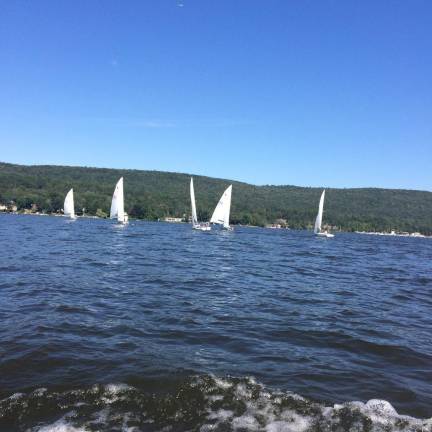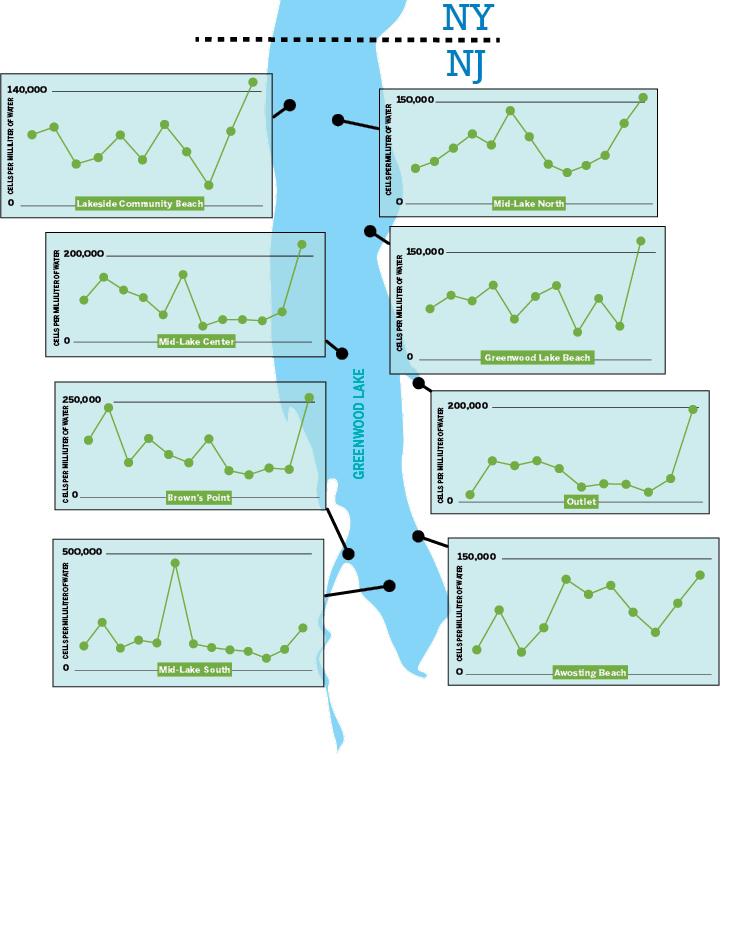‘On the rise:’ Cyanobacteria levels increasing on Jersey side of Greenwood Lake
West Milford. The latest sampling by the New Jersey Department of Environmental Protection shows significant increases in the levels of cyanobacteria on that state’s side of Greenwood Lake.

Testing at eight different locations on the New Jersey side of Greenwood Lake show sharp increases in cyanobacteria levels which fuel the growth of the Harmful Algal Bloom.
The New Jersey Department of Environmental Protection tested the water on Monday, Aug. 26 and then published the results of that testing on Wednesday.
The results showed a sharp increase in the level of cyanobacteria, way above the 20,000 cells per milliliter of water benchmark the agency set as potentially hazardous to people and animals.
All eight of the locations tested at over 135,000 cells per milliliter, with two locations over 200,000.
Monday’s levels were, in some cases, more than four times the levels recorded last week, according to the data.
The eight locations consist of mid-lake north, mid-lake center, mid-lake south, Awosting Beach, Brown’s Point, Lakeside Community Beach, Greenwood Lake Beach association and the outlet.
Cyanobacteria at these levels can produce toxins that can be harmful, officials said.
According to DEP officials, levels above the benchmark can lead to symptoms such as rashes, skin irritation, headaches, gastrointestinal illness and possibly even liver failure in some people who come into contact with, or ingest, the water.
Pets face an even greater risk, including death from exposure to similar algae blooms.
Although local animal hospitals have not had any admissions based on the blooms at Greenwood Lake and Lake Hopatcong, published reports in national media have confirmed pet deaths in other states.
The DEP issued the no contact advisory on the New Jersey side of Greenwood Lake in mid-July warning the public about the conditions once the levels exceeded the 20,000 threshold.
No restrictions or advisories have been placed on the New York side of the seven-mile, bi-state lake.
Despite the advisory, the New Jersey side of the lake is open to boating and other activities.
Three beaches licensed by the DEP in New Jersey have been closed to swimming while the advisory is in place and will only be removed when the levels of cyanobacteria fall below the threshold for two consecutive testing periods, officials said.
